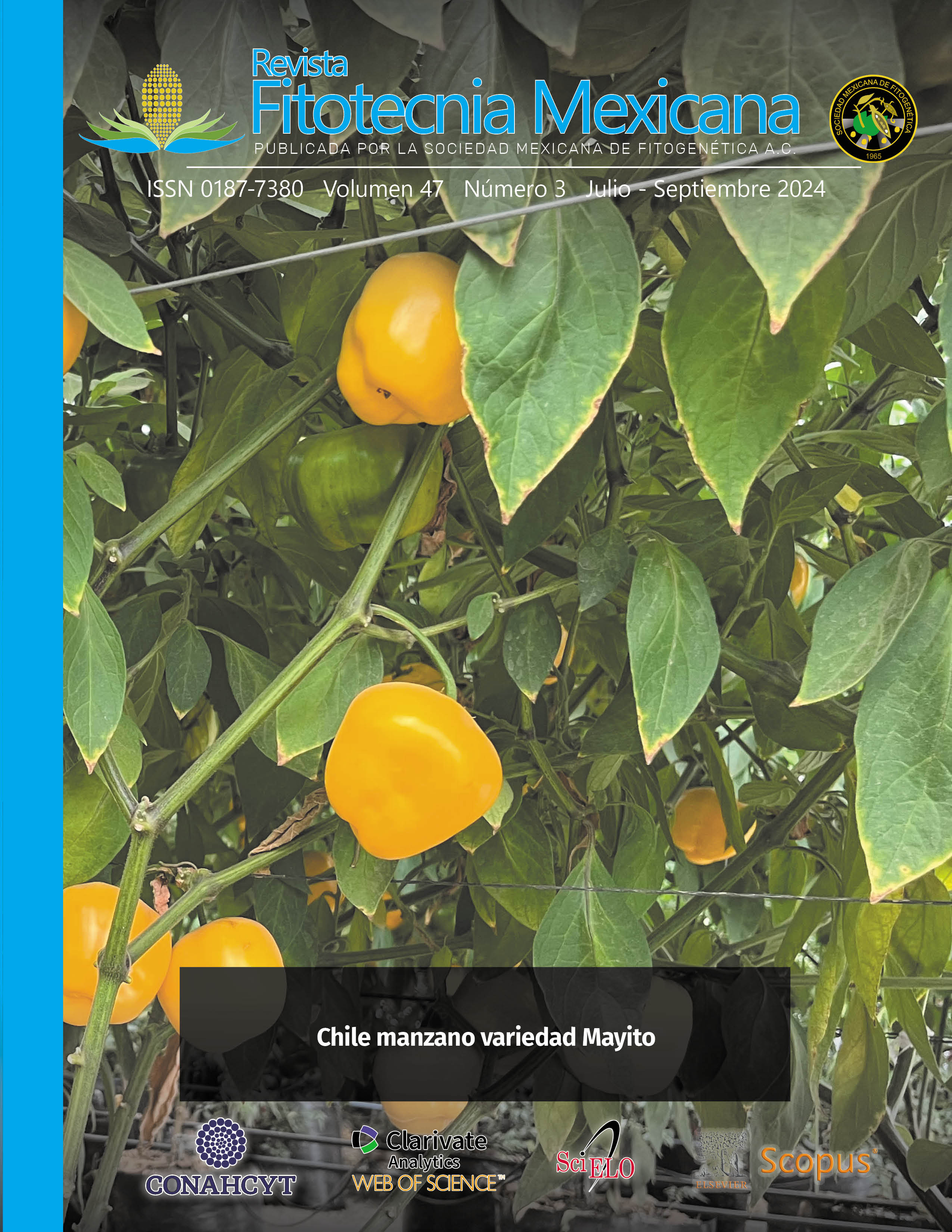FRUIT QUALITY OF MANZANO PEPPER (Capsicum pubescens RUIZ & PAV.) GRAFTED ON CM-334 (Capsicum annuum L.) GROWN IN SOIL INFESTED WITH Phytophthora capsici LEONIAN
Main Article Content
Abstract
In Capsicum pubescens Ruiz & Pav. the main phytosanitary problem is caused by P. capsici Leonian, which negatively affects the quality of the fruits; thus, an alternative for production in soils infested with this oomycete is the use of the rootstock CM-334 (Capsicum annuum L.) universally resistant to P. capsici. For this reason, the effect of the rootstock CM-334 (C. annuum L.) on morphological, physical and phytochemical variables of fruit quality of the Dali hybrid of manzano pepper grown in soil infested with P. capsici and with auxin applications was evaluated, under the hypothesis that the C. annuum rootstock prevents loss of plants due to infection by P. capsici without reducing the fruit quality of the C. pubescens graft with or without auxins. The experiment was established in a completely randomized design with three replications and the evaluation was carried out on the fourth fruit harvest, out of seven total harvests. The analysis of variance and Tukey comparison of means (P ≤ 0.05) was according to a 2 × 4 × 4 factorial arrangement. The results show that fruit quality did not decrease by effect of the CM-334 rootstock; on the contrary, the pericarp thickness, firmness and capsaicinoid content increased, which are positive attributes on the quality of the manzano pepper. Fruits from plants grafted without indole butyric acid (IBA) had 45 % more pungency than ungrafted plants, and with 800 ppm of IBA applied every 30 days it increased even more (24 %). The use of grafted plants of the hybrid Dali of manzano pepper is a viable alternative to produce quality fruits in growing conditions of soils infested with P. capsici, even without applying auxins.

